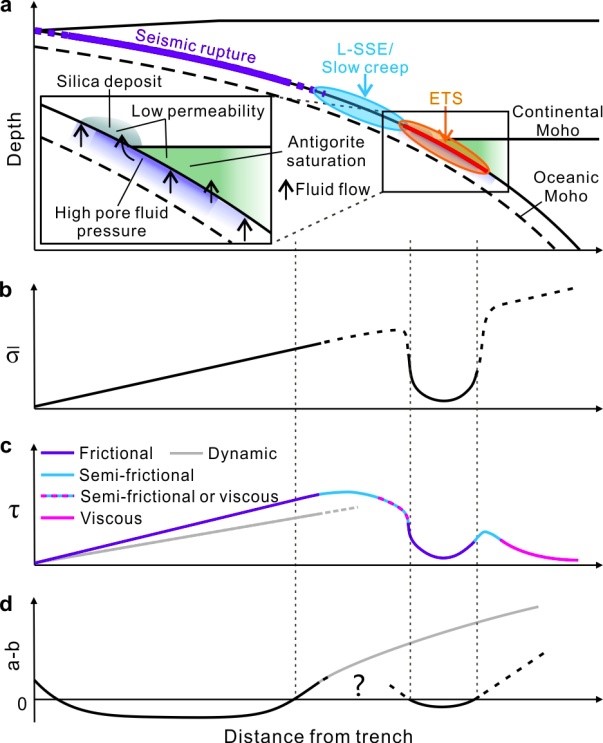
ETS refers to episodic, concurrent occurrence of non-volcanic tremor, low-frequency earthquakes, and geodetically detected slow slip events of relatively short duration.
ETS is one of the most important discoveries in geodynamics since the broad acceptance of plate tectonics. Despite great progresses in observing ETS and numerical modeling of slow slip, the geological and geophysical context of ETS and its relation to the megathrust seismogenic zone are still not clear.
Recently, a unifying rheological model reconciles a wide range of observations of episodic tremor and slip was built by GAO Xiang, Chinese Academy of Sciences and WANG, GSC-Pacific.
The results were published on Nature entitled "Rheological separation of the megathrust seismogenic zone and episodic tremor and slip".
The main finding of this paper is that episodic tremor and slip (ETS) is controlled by geological condition around the mantle wedge corner and separated from the megathrust seismogenic zone in terms of fault zone rheology.
GAO and WANG propose a unifying model for the necessary geological condition of ETS (as shown in the figure below). By developing numerical thermal models, they examine the governing role of thermo-petrologically controlled fault zone rheology (frictional v.s. viscous shear).
High temperatures in the warm-slab environment cause the megathrust seismogenic zone to terminate before reaching the depth of the mantle wedge corner. High pore-fluid pressures around the mantle wedge corner give rise to an isolated friction zone responsible for ETS. Separating the two zones is a segment of semi-frictional or viscous behaviour.
This thermo-rheological model puts a wide range of unexplained characteristics of ETS into geological context: its separation from the seismogenic zone, its correlation with the mantle wedge corner, its absence or rarity in most cold-slab subduction zones, and its occurrence in very different tectonic settings.
This study reconciles a wide range of seemingly disparate observations of ETS and defines a new conceptual framework for the study of slip behaviour and the seismogenesis of major faults.

Schematic illustration of fault stress and slip phenomena for subduction zones that produce great earthquakes and ETS (Image by IOCAS)

86-10-68597521 (day)
86-10-68597289 (night)

86-10-68511095 (day)
86-10-68512458 (night)

cas_en@cas.cn

52 Sanlihe Rd., Xicheng District,
Beijing, China (100864)

